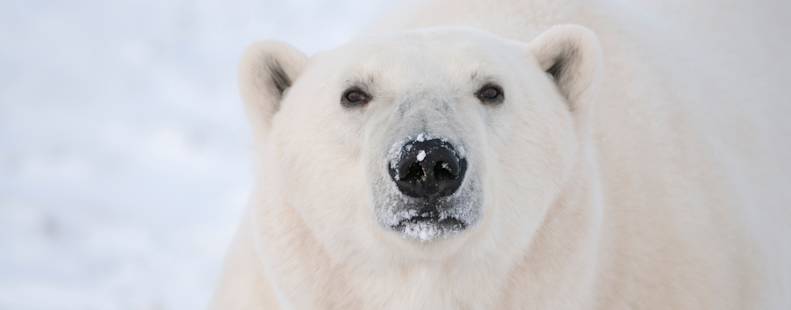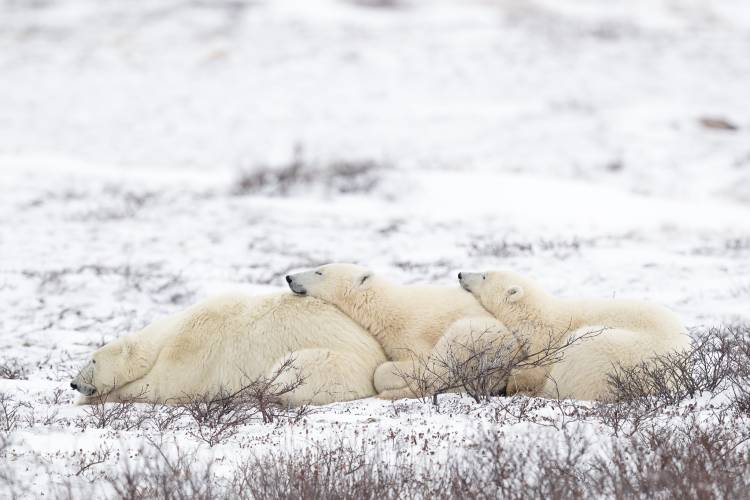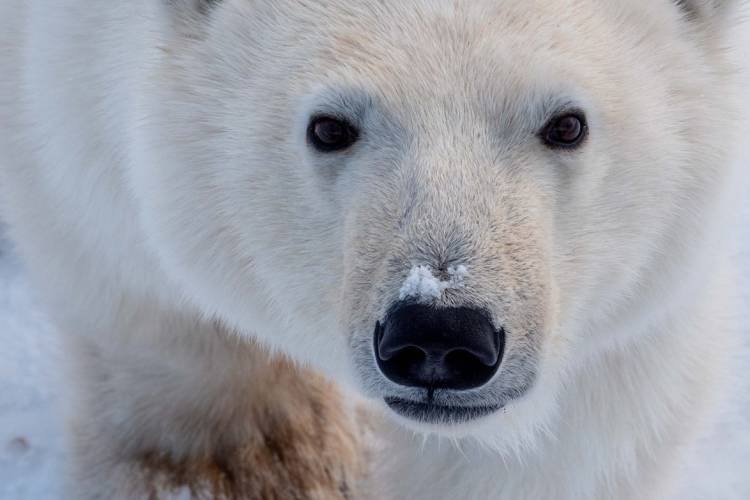Activity 3A: Focus

Photo: BJ Kirschhoffer / Polar Bears International
Status of Polar Bears
The Barents Sea is warming faster than anywhere in the Arctic. Sea ice loss due to climate change is the single biggest threat to polar bears, especially for vulnerable moms and cubs. Our work focuses on addressing both short- and long-term threats to polar bears. Our strategy is to do all that we can to ensure healthy populations of polar bears in the short term, like protecting mums and cubs, while also working to ensure their long-term future through meaningful action on climate change.
Check out a recent blog to learn more about Maternal Den Monitoring - a non-invasive research programs aimed at protecting moms. By using remote cameras to collect video footage of mums with newborn cubs we can assess body condition, behavior, and litter size.
Step One
Watch these videos about the impact of climate change on polar bears.
Here is a snapshot of how climate change connects with declines in some polar bear populations.

Western Hudson Bay Polar Bears
Of the 20 populations of polar bear found in the Arctic, the one in Western Hudson Bay, Canada, is arguably the most comprehensively studied and best known.
Range and Numbers
The Western Hudson Bay population is one of the most southerly of all polar bear populations. As its name implies, it encompasses the western portion of Hudson Bay in Canada, from the Manitoba/Ontario border in the southeast of its range to Chesterfield Inlet in Nunavut in the northwest.
The most recent survey, in 2021, estimated a total of 618 bears in Western Hudson Bay, a 27 percent decline in just five years and a continuation of a long-term downward trend. The population is now about half the size it was in the 1980s. This survey is linked below.
The Western Hudson Bay population is a part of what is known as the “Seasonal Ice Ecoregion,” which encompasses most of the bears of central and eastern Canada. In this area of the Arctic, sea ice melts completely in summer – generally sometime in July, although the precise timing varies from year to year – prompting the bears to come ashore. While they may remain sporadically active on land during the summer, in general they create day beds or curl up in the bush to rest and wait.
Come fall, all save the pregnant bears increase their activity and move closer to the coast in anticipation of the bay freezing again and a return to their seal prey. After several months of fasting and resting, they are ready to return to the ice.
From early October onward, bears gather on the tundra along the shores of Hudson Bay, waiting for ice to form. As soon as the first coastal ice forms and is thick enough to support their weight, the bears head out in search of seals. They may continue to trek back and forth between ice and land at first, but once the ice is thick and extensive enough, they head out onto the bay until forced to come ashore again the following summer.

The polar bears of Western Hudson Bay are especially vulnerable to sea-ice loss caused by a warming climate. Because they must spend summer ashore, every single day they are not on the ice in fall, winter, and spring can have a significant impact. In fact, on average, a polar bear loses a kilogram (2.2 pounds) of body weight every day that it is fasting; and because of climate change, the ice-free period is now three to four weeks longer than it was in the early 1980s. That’s three to four weeks longer that these bears must go without food. That’s an especially dire proposition for pregnant females that are already looking at an eight-month gap between meals between July and February.
Read the latest report on the decline in the Western Hudson Bay polar bear population.
A few Guiding Questions:
What role does the surface of the Arctic sea ice serve for polar bears?
What visible impacts on polar bear populations, particularly those in the seasonal sea ice ecoregion, does declining sea ice have?
What things need to be done to make a difference?

Photo: Tim Auer / Polar Bears International
Finished?
Continue on to Activity 3B – Explore.

Photo: Kieran McIver / Polar Bears International









